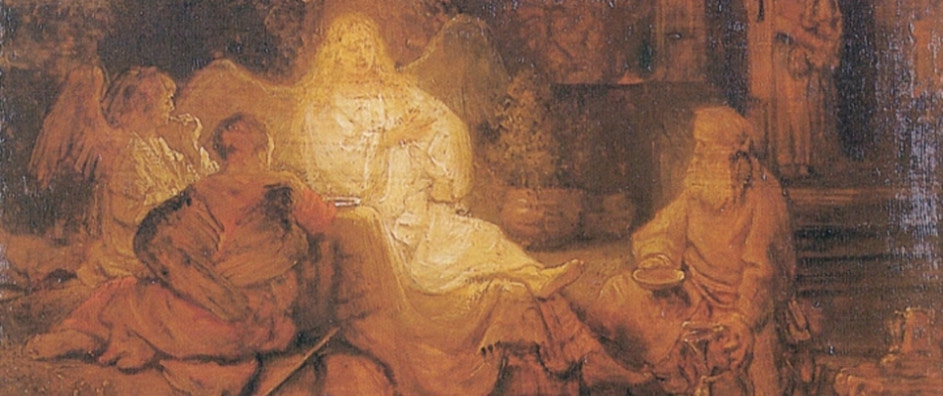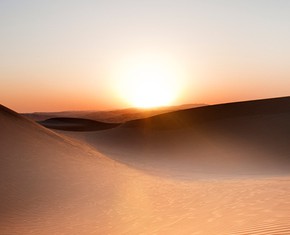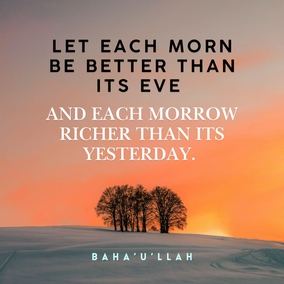The views expressed in our content reflect individual perspectives and do not represent the authoritative views of the Baha'i Faith.
The Bible remembers Abraham as the first of God’s prophets to enclose a sacred space where could people gather to worship together.
According to Muhammad, “The first temple that was founded for mankind, was that in Becca”—the temple erected by Abraham and Ishmael in the Bekka Valley. God commanded them to:
Purify my house for those who shall go in procession round it, and those who shall abide there for devotion, and those who shall bow down and prostrate themselves [in prayer]. – Qur’an 3:90-91, 2:119.
(Later on, it became a Muslim tradition that Adam built the first temple and Abraham merely restored it, but this is not corroborated by any of the sacred scriptures.)
Several special features made Abraham’s first temple different than any other religious structure of its time: It was not oriented toward the sky and stars above. It did not contain any idols, nor was it considered to be the dwelling place of a god. Furthermore, and maybe most important, its use was not restricted to priests, because anyone was allowed to enter it and pray.

By contrast, the enormous stone circles such as Stonehenge and the ring of Brodgar, which seem to have served a religious purpose, were aimed at providing a view of the sky where divine portents might be observed at certain times of the year. The jagged ziggurats of Mesopotamia were capped, it is thought, by small shrines at the top that were available to any god who was willing to come down from the sky and make it his home. The solid construction of the ziggurats—several platforms of sun-dried brick, each platform smaller than the one on which it rested—did not allow for the possibility of interior gatherings.
The religious structures of Egypt were not solid inside, like ziggurats, but the few rooms they did contain were not open to the general public. Instead, they served primarily as repositories for sacred objects and as presumptive “homes” for a god or a god’s family. They were also places where priests conducted rites thought to provide protection to the pharaoh and his subjects. Ordinary citizens might be allowed into the courtyard of a temple to catch sight of an idol on a festival day, and a few lucky people might be allowed to enter an audience chamber to submit a question to one of the gods, but in general, use of the interior spaces was restricted to priests.
The new temple built by Abraham was a lopsided rectangle with the measurement of each of the four sides being somewhere between thirty and forty-nine feet. Abraham placed a football-sized rock, which geologists suggest may be an agate, somewhere inside the room, maybe in a niche in the easternmost wall. The stone fractured into several pieces during a fire following a battle in 683 AD, but it was later reassembled, set within a metal frame, and embedded in one of the walls, where it can still be seen today. The purpose of the stone isn’t known, but it could have been a transitional object—a means of helping worshippers abandon idols by giving them a marked direction toward which they could bow or kneel in prayer.
Abraham’s temple, originally known simply as House of God, has been refurbished and rebuilt several times, making it impossible to know whether the original structure was of wood or stone—though it is reasonable to suppose that it was constructed of local granite with a wood roof supported by several pillars. A series of renovations during the following centuries changed the sizes of the walls and pushed the ceiling higher, making the structure more like a cube than a rectangle.
The name by which the building is currently known—Kaaba or Ka’bah or Caaba—refers to the Arabic word for cube, and was applied to the building only after the all the changes in its appearance had been finished.
No matter its name, the Kaaba served several important purposes in the centuries after Abraham’s death. It was a place where God could be worshipped by ordinary people as well as a venue for community gatherings, such as the poetry contests that were popular among the Arabian tribes. The House of God was long considered such sacred, neutral territory that even the most bitter of adversaries would suspend their disagreements while in its vicinity, a practice that made Mecca a relatively peaceful city and allowed it to prosper as a center of trade. Now and then, a person fleeing for his life from an enemy would take refuge and sanctuary inside the House of God, because no one was allowed to enter it for the purpose of revenge or violence.
As the renown of the Kaaba spread, pilgrims came to it from places outside of Arabia, including Jews from Canaan. It was even mentioned in an ancient travel guide by Diodorus Siculus, a Greek historian of the First Century BC. In his book Bibliotheca Historica, the section on Arabia included these words about Mecca: “‘And a temple has been set up there, which is very holy and exceedingly revered by all Arabians.’”
Following the pattern begun by Abraham, synagogues, churches, mosques, and Baha’i temples are alike in that they are dedicated to the worship of an invisible/indivisible God who does not live inside a specific idol or shrine.
The structures are not oriented toward a particular view of the stars, nor is their use limited to a special class of clergy. They are not meant to be admired only from the outside, but derive their true purpose from the way they invite believers to come inside and worship together. Like Abraham’s original House of God, these sacred spaces have often become important centers of community life because they have hosted functions other than that of worship, such as classes for children, weddings, concerts, and even town meetings.
The Baha’i teachings have continued these ancient traditions by once again inviting all humanity—regardless of their beliefs—to come together in Houses of Worship in unity and harmony:
… the original purpose of temples and houses of worship is simply that of unity—places of meeting where various peoples, different races and souls of every capacity may come together in order that love and agreement should be manifest between them. That is why Baha’u’llah has commanded that a place of worship be built for all the religionists of the world; that all religions, races and sects may come together within its universal shelter; that the proclamation of the oneness of mankind shall go forth from its open courts of holiness—the announcement that humanity is the servant of God and that all are submerged in the ocean of His mercy. – Abdu’l-Baha, The Promulgation of Universal Peace, p. 65.
















Comments
Sign in or create an account
Continue with Googleor